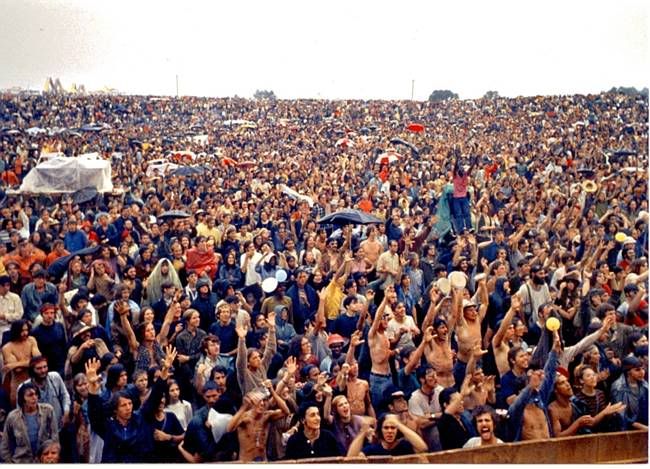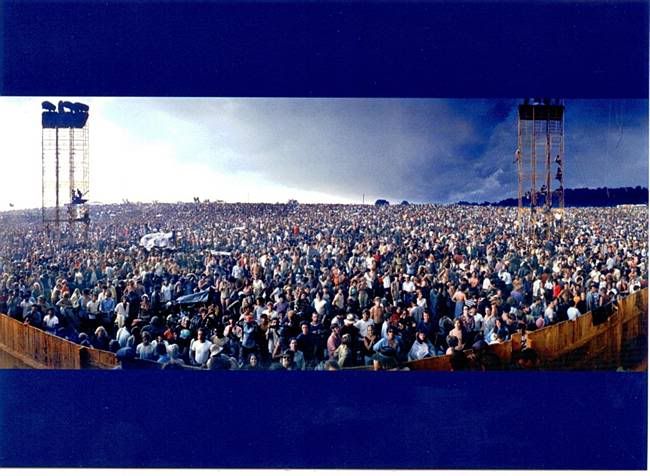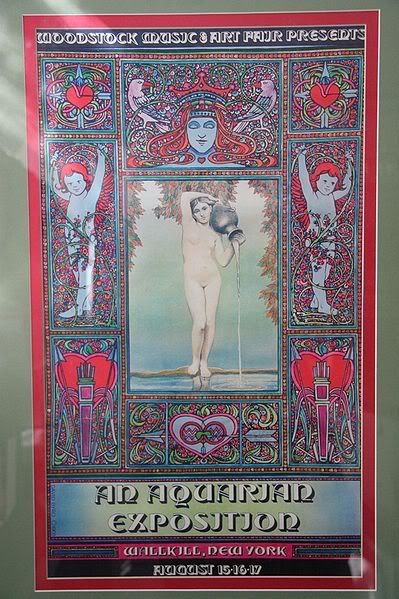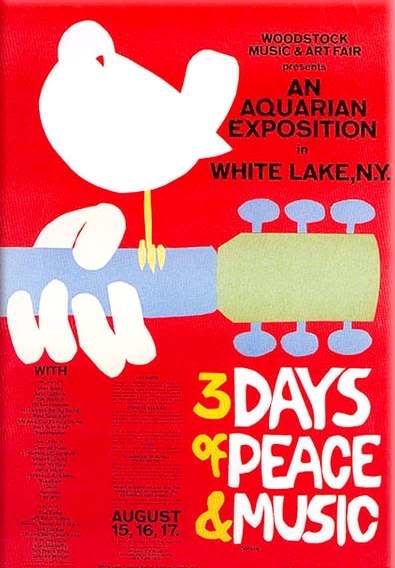It is hard to believe it has been forty years. The videos here are not in order of performance; I just wanted to share some of the music and background of this music festival that so many have called life-changing. Could this ever happen again, or was it just a combination of factors that gave it it's magic? I would love to hear your thoughts. Leave them in a comment.
Most people know I am a Hendrix fanatic. The last video is close to 60 minutes long. I hope you enjoy all the music I selected.
The Original Woodstock Poster with the Wallkill, New York location
Woodstock 1969
Rolling Stone has called it "the most famous event in rock history." The Woodstock Music and Art Fair, on a 600-acre farm in the township of Bethel, New York, from August 15-18, 1969, represents more than a peaceful gathering of 500,000 people and 32 musical performances. Woodstock has become an idea that has suffused our culture, politically and socially, as much as musically. Joni Mitchell, who didn't attend but wrote an anthemic song about it, once said, "Woodstock was a spark of beauty" where half-a-million kids "saw that they were part of a greater organism." According to Michael Lang, one of four young men who formed Woodstock Ventures to produce the festival, "That's what means the most to me – the connection to one another felt by all of us who worked on the festival, all those who came to it, and the millions who couldn't be there but were touched by it."

Lang met Artie Kornfeld, a Capitol Records A&R man and songwriter, in late 1968, and the two envisioned producing a festival in Woodstock, New York.and building a recording studio there. In search of financing they connected with John Roberts and Joel Rosenman, a pair of young venture capitalists who were already building Media Sound studios, a large-scale recording facility in New York City. In February of 1969, the four men incorporated Woodstock Ventures, Inc., and they began work on the festival. Soon, the conservative townsfolk of Wallkill became alarmed by the growing number of longhairs arriving to prepare the festival grounds, and a number of lawsuits were filed to stop the festival. After weeks of tension, town meetings, and legal maneuverings, Woodstock Ventures were refused permission to produce the festival.The studio project was put on hold so they could focus all their energy on saving the festival. Miraculously, 600 bucolic acres belonging to White Lake dairyman Max Yasgur, in the township of Bethel, New York, were discovered after Lang received a call from a local motel owner Elliott Tiber the day after the Wallkill site was lost. Work rapidly got underway to turn the rural acreage into a concert site with camping areas for 200,000. Three weeks later, during the week of August 11, thousands of people from all over the country began flocking to the festival site.

By Wednesday, August 13, the lush green bowl in front of the massive 75-foot stage was already filled with some 60,000 people. On Friday the roads were so clogged with cars that the only way most artists could reach the festival was by helicopter from a nearby airstrip. Though over 100,000 tickets were sold prior to the festival weekend, they became unnecessary: The fences and gates were never finished and people simply swarmed over those that were in place. "It's a free concert from now on!" was announced from the stage. As John Roberts later pointed out, "It took us eleven years to break even, but it was a success in every other way."
The music was scheduled to start at 4 p.m. on August 15, and just after 5 it did, thanks to New York-born folksinger Richie Havens. His improvised and rhythmic "Freedom" set the tone for the weekend. "The vibe at Woodstock was an expression of the times," says Joel Rosenman. "Energized by repugnance for a senseless war and for the entrenched discrimination of the establishment, a spirited but nonviolent counterculture was sweeping the country. That counterculture burst into bloom like the mother of all Mother's Day bouquets at Woodstock."

The occasional cloudburst delayed the primarily acoustic music as Friday night wore on, but eight acts, plus a swami, made it to the stage. Around 2 a.m, Joan Baez closed the first night with the spiritual "We Shall Overcome."
..
Saturday boasted the most music of the weekend, starting just after noon and continuing until Sunday at dawn (with Jefferson Airplane performing "morning maniac music," as described by Grace Slick). Highlights included the then-unknown Santana in mid-afternoon, and that night spectacular back-to-back performances by Sly and the Family Stone and The Who. Blues-rock was featured via Canned Heat and Mountain, followed by such legendary California-based artists as the Grateful Dead, Creedence Clearwater Revival, and Janis Joplin. Sunday featured another long span of music, though violent thunderstorms wreaked havoc just after Joe Cocker and The Grease Band's finale of "A Little Help From My Friends." The music was delayed until late afternoon but carried on throughout the night with more highlights including the Texas bluesman Johnny Winter and Crosby, Stills, Nash and Young (their second gig). On Monday morning at 8:30, Jimi Hendrix closed out the festival. His magnificent, improvisational version of "The Star Spangled Banner" has come to symbolize the weekend.
Around 10:30 a.m. on August 18, the festival came to an end. The innovative concert film Woodstock, directed by Michael Wadleigh, was released in March of 1970 and took the festival's message around the world. The movie documented a community of a half million people who managed to peacefully co-exist over three days of consistent rain, food shortages, and a lack of creature comforts. "Woodstock is a reminder that inside each of us is the instinct for building a decent, loving community, the kind we all wish for," according to Joel Rosenman. "Over the decades, the history of that weekend has served as a beacon of hope that a beautiful spirit in each of us ultimately will triumph."
Recordings of the music played that weekend still evoke the magic and power felt by those who were there. "It was a privilege to help found something that has meant so much to so many," adds Rosenman. "Woodstock turned out to be a sort of permanent relative of the Family of Man—the adventuresome, kind-hearted uncle you're always happy to see at Thanksgiving and graduation. I'm really grateful that we both ended up in the same family."
Two days after Woodstock ended, the New York Times ran an editorial praising what had happened at Bethel (a reversal from a previous editorial condemning the festival). It concluded with a quote from Shakespeare's Henry V, which seems appropriate upon the fortieth anniversary of Woodstock:
"He that outlives this day, and comes safe home, will stand a-tiptoe when this day is nam'd."
from wiki.woodstock.com
Woodstock Statistics List
2.............Festival births
3.............Deaths (one each from heroin overdose, ruptured appendix and being run over by a tractor)
50,000.....The number of people expected
500,000+..The number of people who showed up
This last video is all of Hendrix's performance.
Enjoy!!
Enjoy!!
..



No comments:
Post a Comment